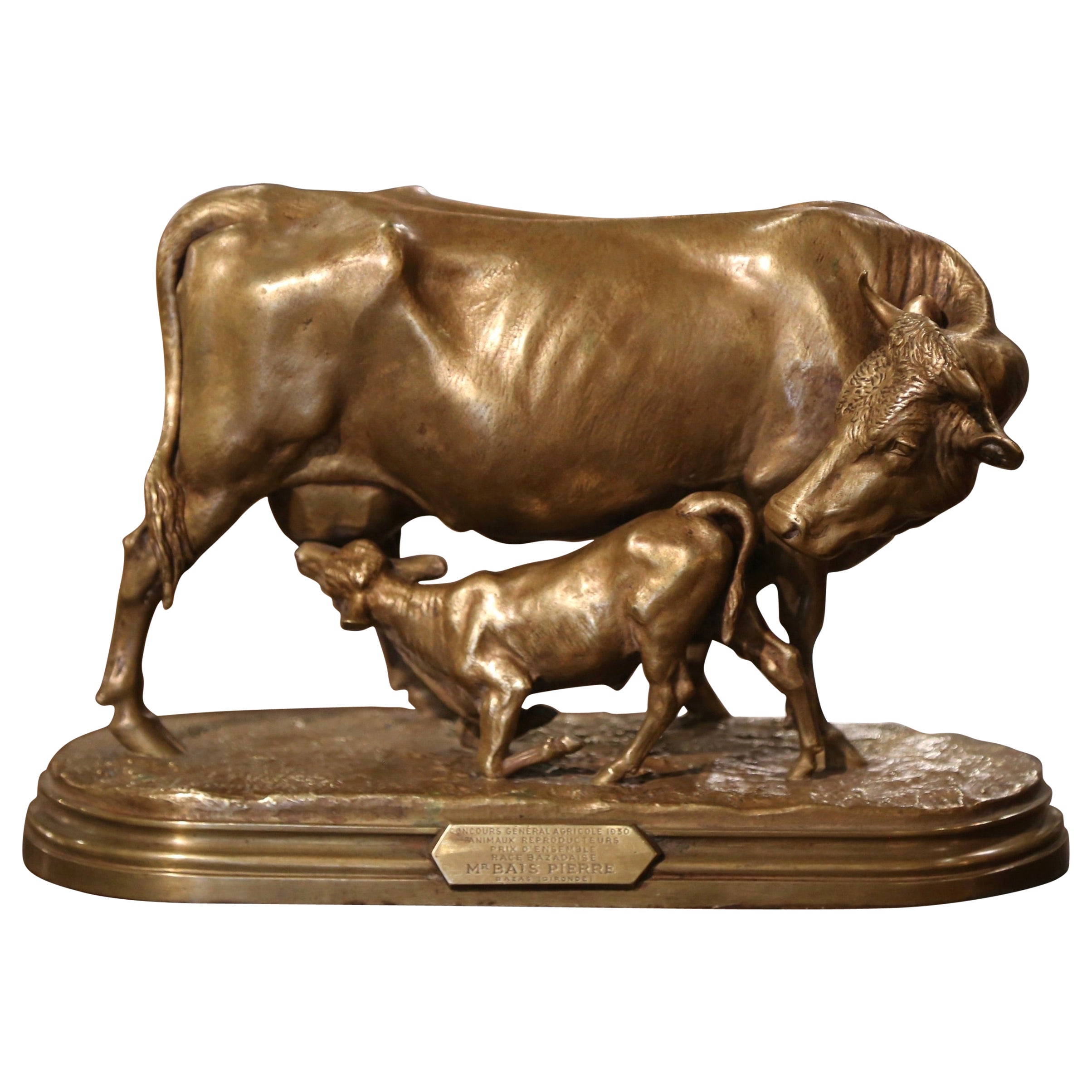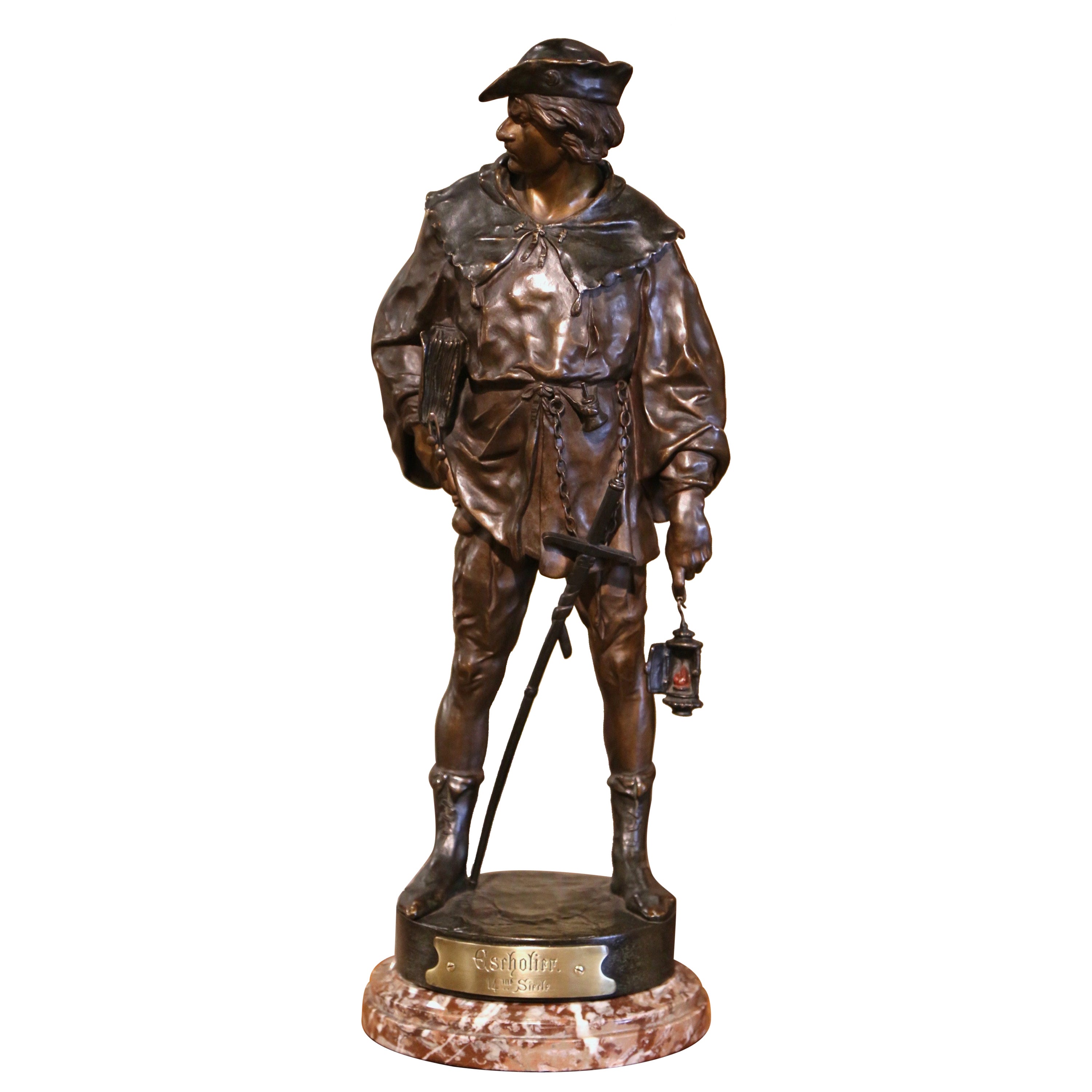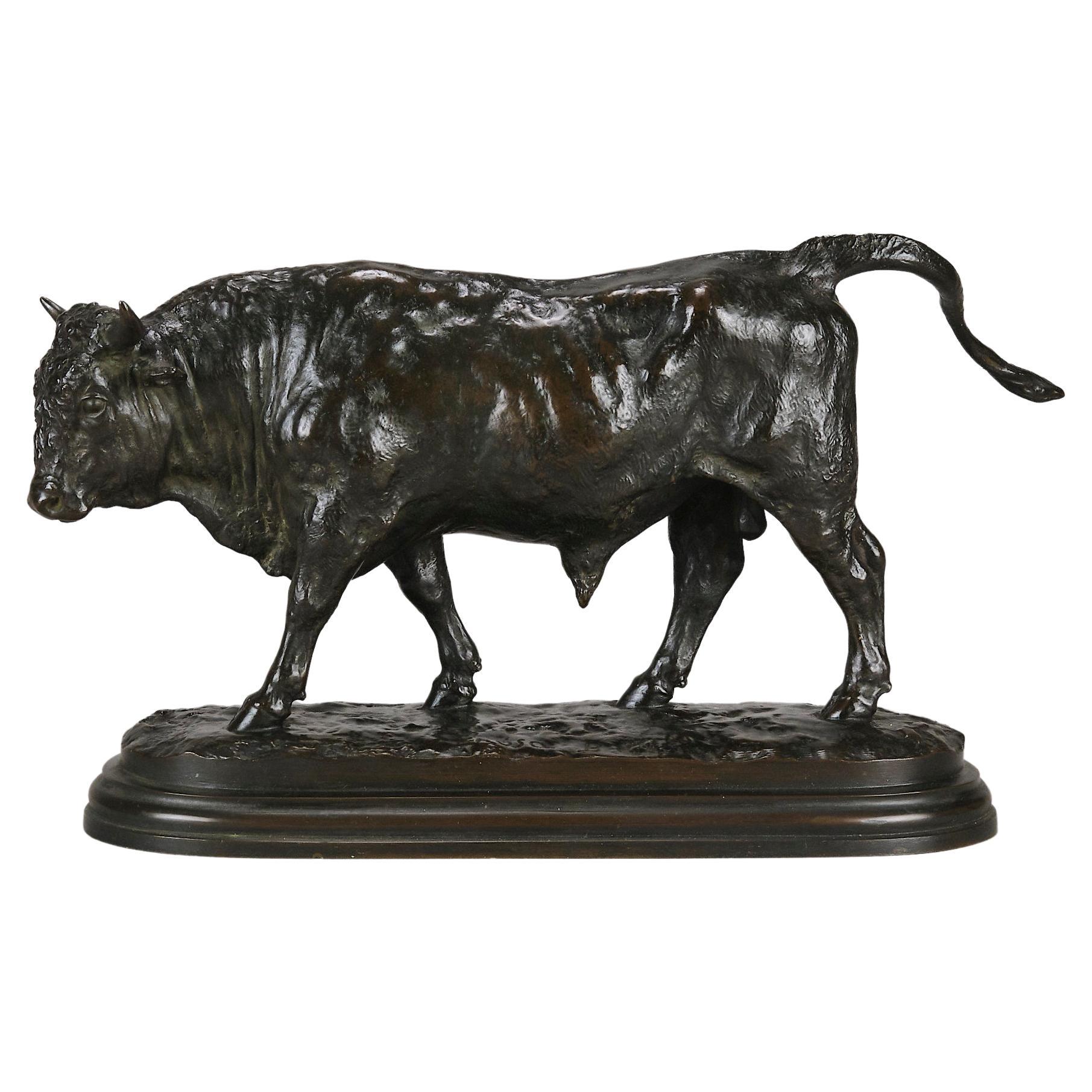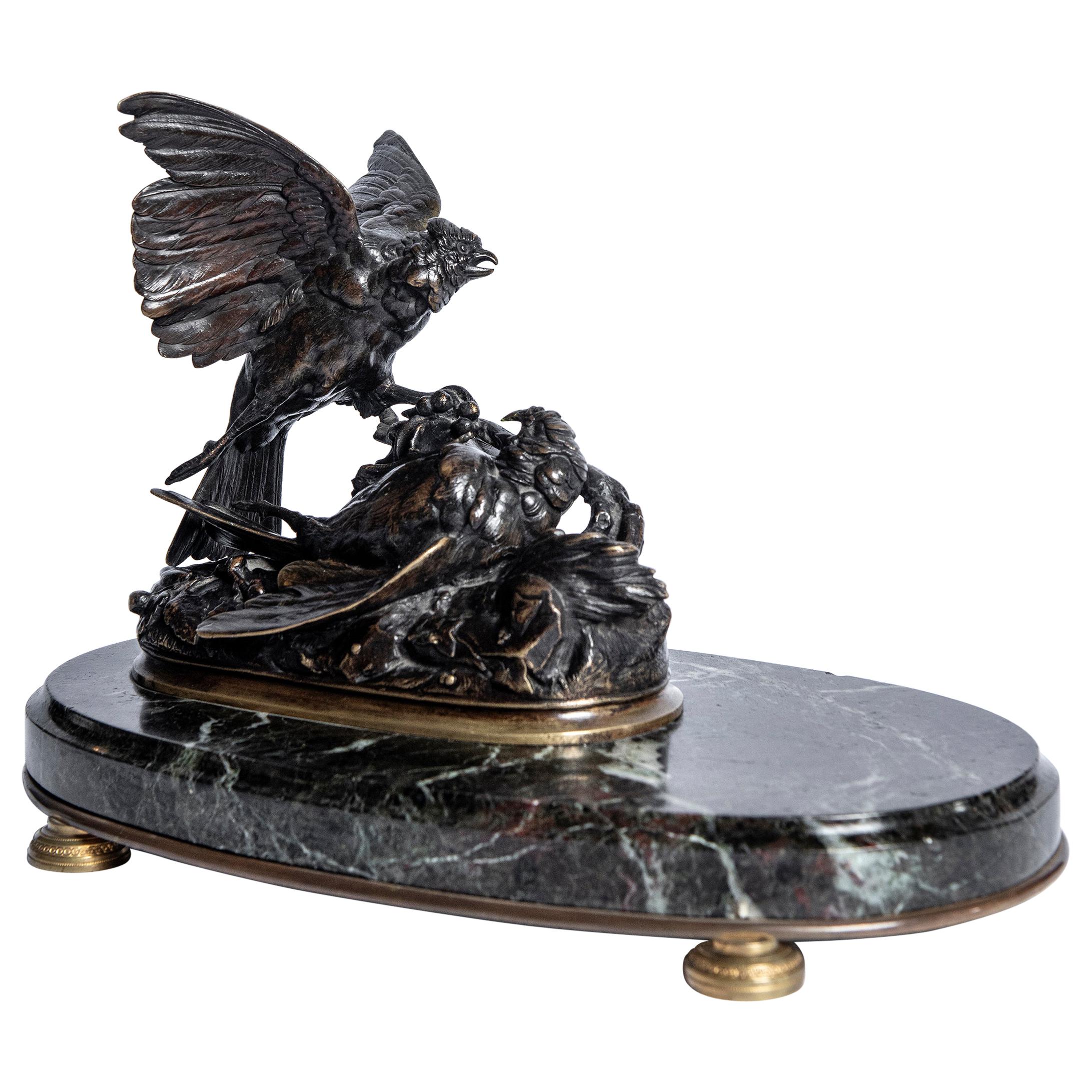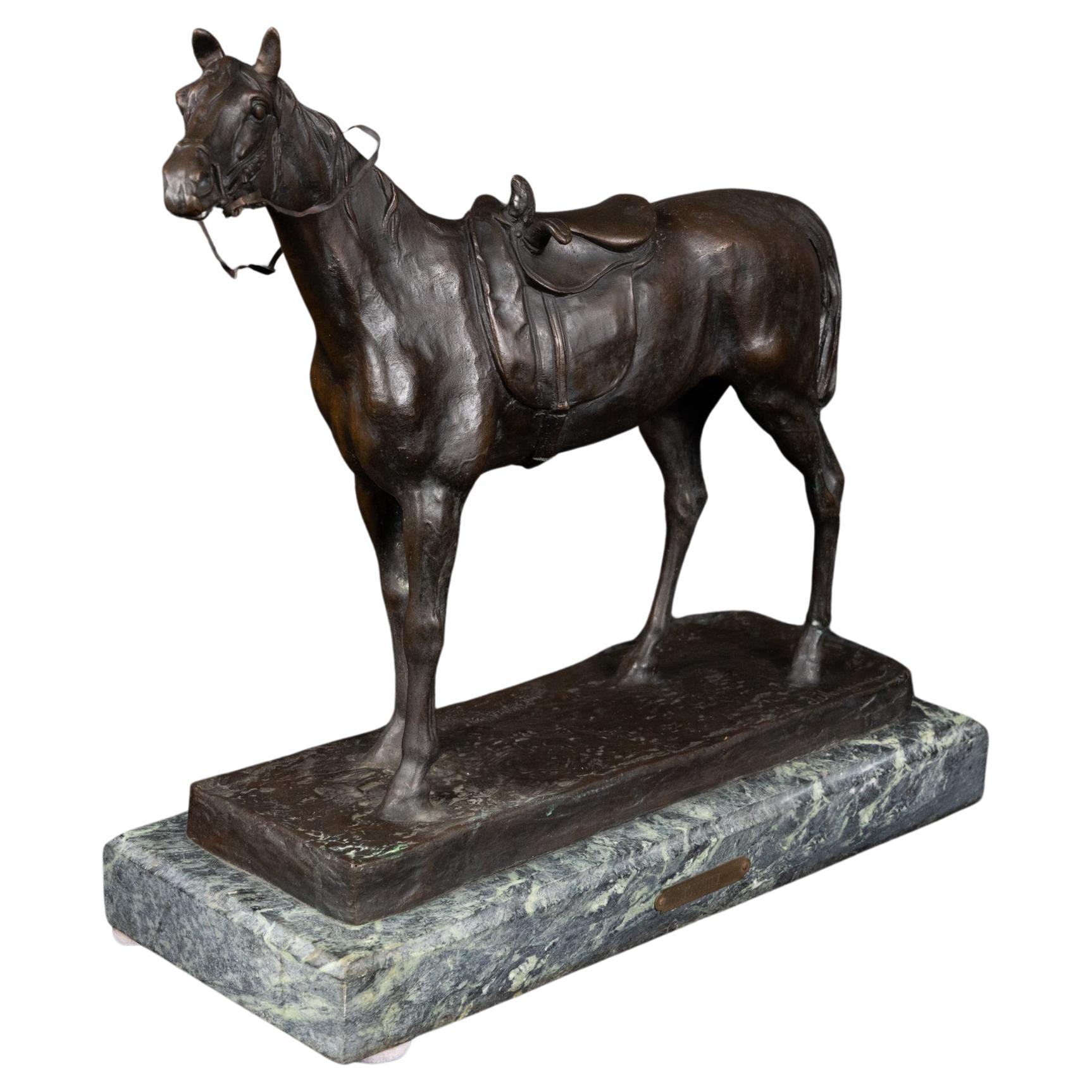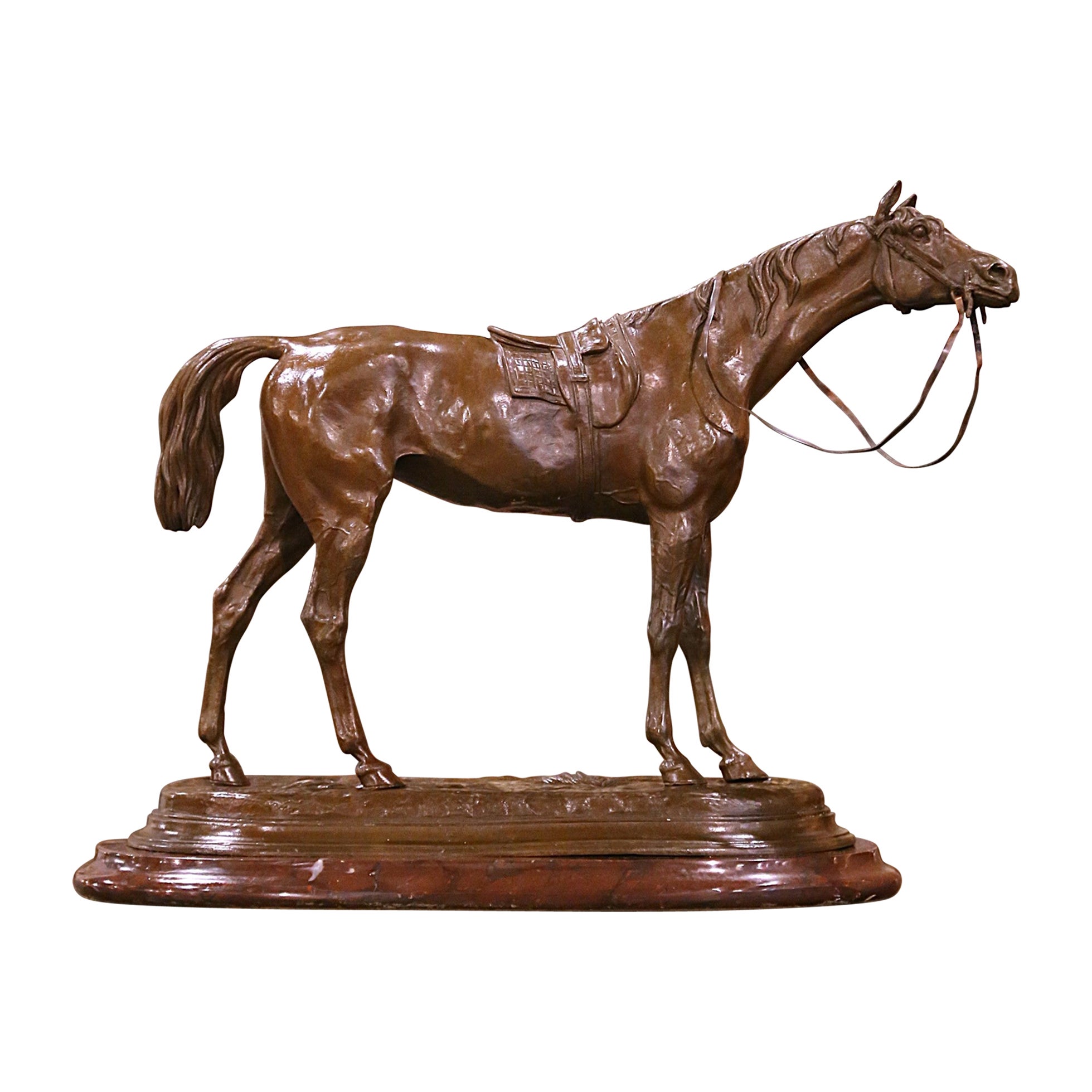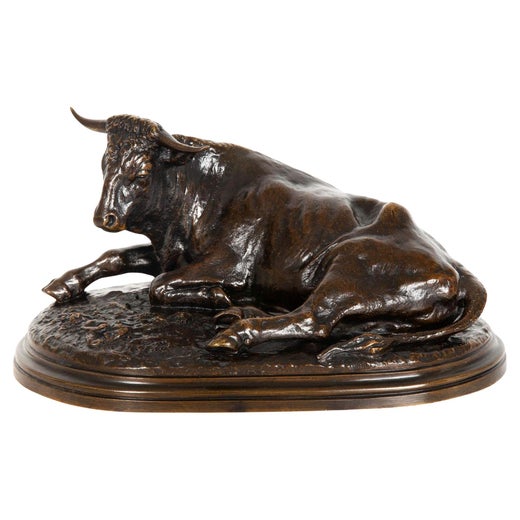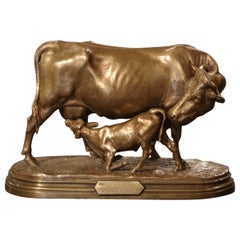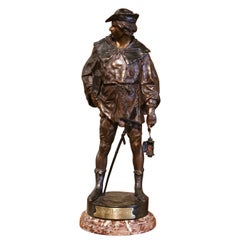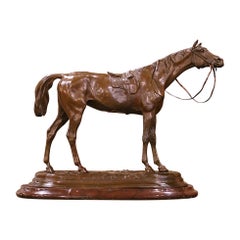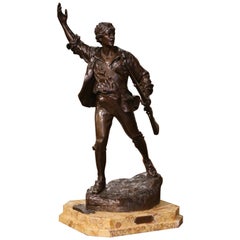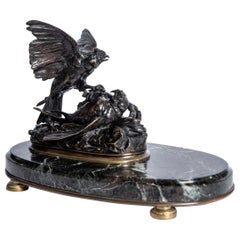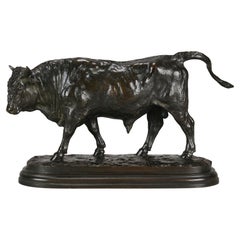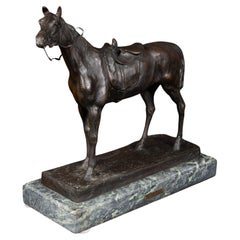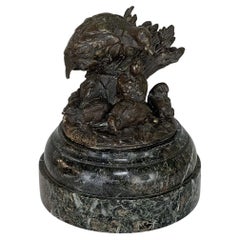19th Century French Bronze Lying Cow Sculpture on Marble Base Signed R. Bonheur
About the Item
- Creator:Rosa Bonheur (Artist)
- Dimensions:Height: 5.5 in (13.97 cm)Width: 9.5 in (24.13 cm)Depth: 5 in (12.7 cm)
- Materials and Techniques:
- Place of Origin:
- Period:
- Date of Manufacture:circa 1880
- Condition:Wear consistent with age and use.
- Seller Location:Dallas, TX
- Reference Number:Seller: 242-2361stDibs: LU951240230192
Rosa Bonheur
Rosa Bonheur was among the most accomplished female painters of the 19th century, a time when women were typically not encouraged to pursue fine arts as a profession. Bonheur never married and lived openly as a lesbian. She is remembered for her realist animal paintings and highly detailed bronze animal sculptures.
Bonheur was born in Bordeaux, France, in 1822. Her mother died when she was just 11. Her father, a painter, believed in female education and supported her artistic pursuits. He oversaw Bonheur’s painting education after her unsuccessful apprenticeship as a seamstress.
Bonheur rose to prominence relatively early in her career. In 1848, the French government commissioned a piece for an exhibition at the Paris Salon. The resulting painting, Ploughing in the Nivernais, is today in the collections of the Musée d’Orsay in Paris. Around this time, she began a relationship with fellow artist Nathalie Micas. The pair remained together for the rest of Micas’s life.
Bonheur’s most famous painting, The Horse Fair, was exhibited at the Paris Salon in 1853 and completed in 1855. It is a depiction of the horse market, where Bonheur went twice a week for a year and a half to work on her sketches. She applied for a police permit to wear men’s clothing for comfort and to dissuade attention. The painting, which measures eight feet across, is in the collections of the Metropolitan Museum of Art in New York.
In 1855, Bonheur’s art dealer introduced her work to the United Kingdom, where her art proved even more popular than in her home country. Her financial success allowed her to move to a large property near Fontainebleau, France, in 1859, where she lived for the rest of her life. It has since been renamed Château de Rosa Bonheur and includes a museum dedicated to her work.
Bonheur was awarded the decoration of the French Legion of Honour in 1865 and was promoted to Officer of the Order in 1894, becoming the first female artist to receive the honor. In 1893, she exhibited at the World’s Columbian Exposition in Chicago.
Bonheur died in 1899 at the age of 77. She was buried in Père Lachaise Cemetery next to Nathalie Micas.
On 1stDibs, find a collection of Rosa Bonheur’s sculptures.
- ShippingRetrieving quote...Shipping from: Dallas, TX
- Return Policy
More From This Seller
View AllAntique Late 19th Century French Animal Sculptures
Bronze
Antique Late 19th Century French Medieval Figurative Sculptures
Bronze
Antique Late 19th Century French Animal Sculptures
Marble, Bronze
Antique Late 19th Century French Figurative Sculptures
Marble, Bronze
Late 20th Century French Figurative Sculptures
Marble, Bronze
Antique Late 19th Century French Animal Sculptures
Bronze, Brass
You May Also Like
Antique Late 19th Century French Neoclassical Animal Sculptures
Marble, Bronze
Antique 19th Century French Art Nouveau Animal Sculptures
Bronze
Antique 19th Century French Figurative Sculptures
Bronze
Antique 1890s French Belle Époque Animal Sculptures
Marble, Bronze
Antique 19th Century French Empire Animal Sculptures
Marble, Bronze
Antique Late 19th Century French Louis XIV Figurative Sculptures
Marble, Bronze
